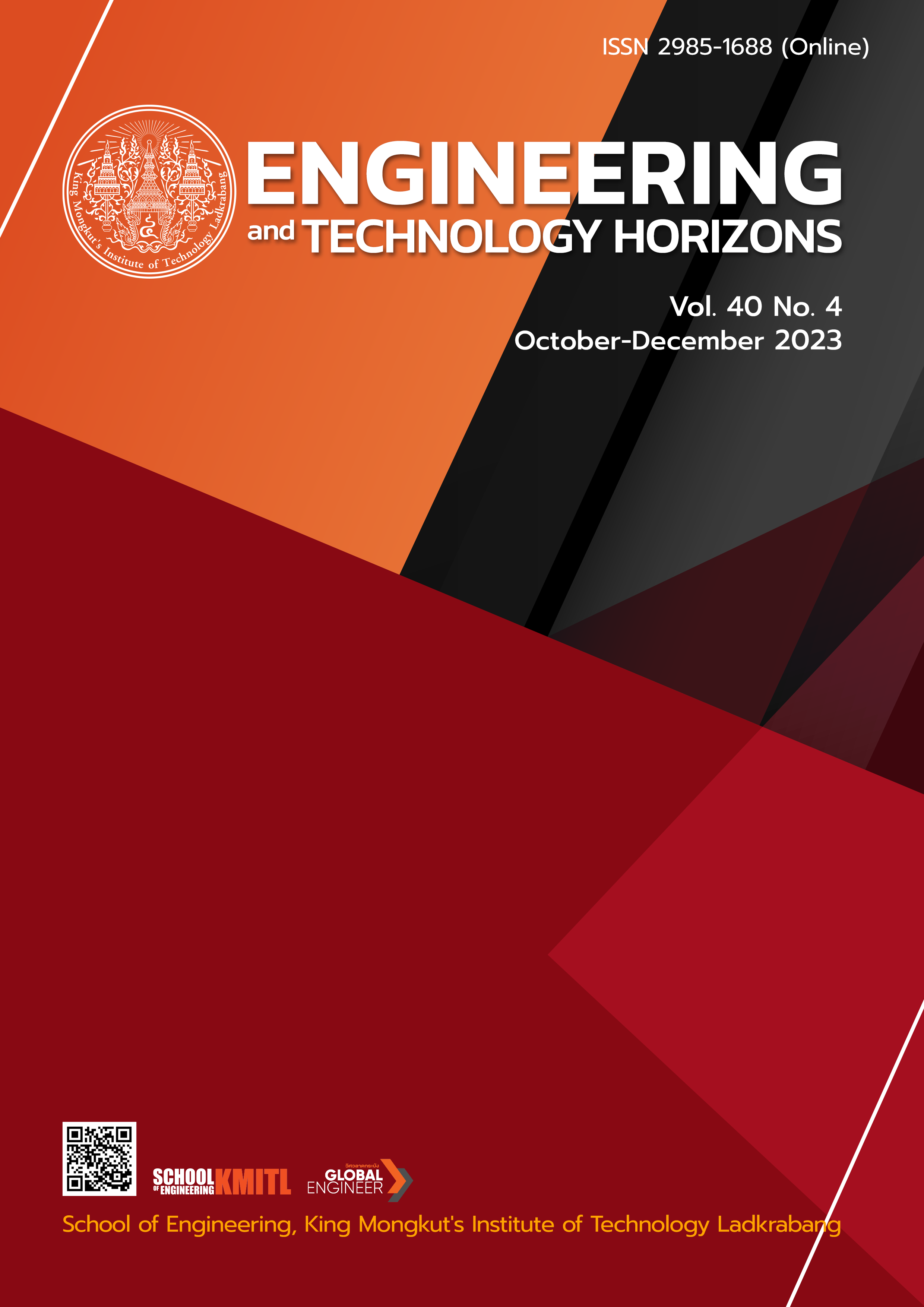Production Improvement of Rail Joint by Industrial Engineering Techniques: Case Study of Rail Joint Production
DOI:
https://doi.org/10.55003/ETH.400402Keywords:
Multiple Activity, Why-Why Analysis, Functional Competency, Analytical Hierarchy ProcessAbstract
The aim of this research is to improve the rail joint production performance together with appropriate personnel selection process for after-improvement work. The investigation and improvement are done in two levels: process level and activity level. At process level, improvement is done at the bottleneck process using why-why analysis approach along with Eliminate-Combine-Rearrange-Simplify (ECRS) principle. Next, production activity is studied through multiple-activities chart to determine the maximum number of machines which workers can handle. In order to establish staff selection criteria, proper capability for each task is determined by applying Analytical Hierarchy Process to obtain weights for each criterion. The results are reduction of operations processes from 9 stages to 8 stages and personnel reduction from 5 workers to 2 workers. Those two staffs are chosen based on weights for essential tasks, which are 0.340 for machine setting adjustment, 0.367 for product quality test, 0.178 for communication, and 0.115 for read ability to the drawings. Besides that, such improvement can reduce the average percentage of the idle time from 63.56 to 34.65 or a decrease 16.54 percentage but reduce the percentage of machine work rate from 76.16 to 63.56 or a decrease 16.54 percentage.
References
E. Sriariyayunpong, “Development of Thailand’s double-track railway system,” Journal of Rail Relation, no. 6, pp. 3–5, 2021.
H. Dangre, “A Review On Insulated Rail Joints (IRJ) Failure Analysis,” International Journal of Advance Research and Publication, vol. 3, no. 1, pp. 5–9, 2019.
Z. Yang, P. Zhang and L. Wang, “Wheel – rail impact at an insulated rail joint in an embedded rail system,” Engineering Structures, vol. 246, 2021, Art. no. 113026, doi:10.1016/j.engstruct.2021.113026.
E. Gardie, H. Dubale, E. Tefera, Y. M. Bezzie and C. Amsalu, “Numerical analysis of rail joint in vertical applied load and determining the possible location joints,” Forces in Mechanics, vol. 6, 2022, Art. no. 100064, doi: 10.1016/j.finmec.2021.100064.
K. Athikulrat and P. Pakpoom, “Application of Lean Manufacturing System to Increase Productivity: Case Study of U.P.S. Industrial Co.,Ltd, ” Journal of Science and Technology, vol. 6, no. 3, pp. 13–26, 2017.
K. Athikulrat, “Productivity Improvement by Fundamental of Hand Motions: A Case Study of Assembly Line in Electronics Company,” RMUTP Research journal, vol. 11, no. 1, pp. 165–176, 2017.
K. Athikulrat, “A Standard Time Study of Install the Pain Mold: A Case Study of Magnetic Annex Supply Partnership,” Journal of Engineering, RMUTT, vol. 17, no. 1, pp. 77–90, 2018.
P. Pornprasert, S.Karawek, K. Kittisuntaropas and P. Boonrom, “An Application of Preventive Maintenance Principles to Reduce the Machine Breakdown Time in the handbag Manufacturing: A Case Study In Thai Silk Industry Co., Ltd.,” Thai Industrial Engineering Network Journal, vol. 3, no. 2, pp 15–21, 2017.
C. Pakdeewanich and P. Joungkijworakul, “Increasing Efficiency of tempered Glass Production Process,” CSNP-Journal, vol. 6, no. 2, pp. 43–56, 2021.
S. Tumrongsuk and K. Jibaim, “Improvement to Increase Efficiency in Producing Plates of Coil Component,” CSNP-Journal, vol. 5, no. 2, pp. 53–67, 2020.
M. M. D. Widianta, T. Rizaldi, D. P. S. Setyohadi and H. Y. Riskiawan, “Comparison of Multi-Criteria Decision Support Methods (AHP, TOPSIS, SAW & PROMENTHEE) for Employee Placement,” Journal of Physics: Conference Series, vol. 953, 2018, Art. no. 012116, doi: 10.1088/1742-6596/953/1/012116.
P. N. Kamble and N. Parveen, “An Application of Integrated Fuzzy AHP and Fuzzy TOPSIS Method for Staff Selection,” Journal of Computer and Mathematical Sciences, vol. 9, no. 9, pp. 1161–1169, 2018.
R. E. Sari, A. Meizar, D. H. Tanjung and A. Y. Nugroho, “Decision Making With AHP for Selection of Employee,” in 2017 5th International Conference on Cyber and IT Service Management (CITSM), Denpasar, Indonesiam, Aug. 8–10, 2017, pp. 1–5, doi: 10.1109/CITSM.2017.8089285.
R. Kanchanapunyakom., “Activities Analysis,” in Industrial Work Study, 2nd ed. Bangkok, Thailand: Top Piblishing Co., Ltd., 2010, ch. 9, sec. 4, pp. 143–160.
C. jantakat, “Competencies Factors Affecting Work Efficiency of Lecturers in Higher Education Institution, Nakhonratchasima Province,” Journal of Business Administration The Association of Private Higher Education Institutions of Thailand, vol. 7, no. 1, pp. 162–177, 2018.
W. Suksamran, “Competency Guidelines for Selection Font Office Staff 3-Star Hotels Bangkok Case Study,” M.A. thesis, Dept. Integrated Tourism Management., NIDA Institute., Bangkok, Thailand, 2017.
C. Kongphet, “An Application of the Analytic Hierarchy Process for supplier selection in Lens and Camera Manufacturer,” M.E. Independent study. Dept. Industrial Eng., Thammasat Univ., Bangkok, Thailand, 2016.
L. Ratana-arporn and T. Woraluckkij, “Application of Analytic Hierarchy Process for Developing Selection System for Technical Driver,” Kasetsart Engineering Journal, vol. 19, no. 58, pp. 60–71, 2006.
T. L. Saaty, “Hierarches and Priorities : A first look,” in The Analytic Hierarchy Process: Planning, Priority setting, Resource Allocation, New York, NY, USA: McGraw-Hill International Book Co., 1980, ch. 1, sec. 4, pp. 17–21.
P. Wipoopinyo, “The Localization of Trading Fruits: The Case of Transaction between Hatyai and Sadao Area, Songkhla, Thailand,” Journal of Management Sciences, vol. 36, no. 2, pp. 87–112. 2019.
S. Mahendra, “Factor Rating Method: Vendor Evaluation System,” SCMS Journal of Indian Management, vol. 12, no. 1, pp. 25–37. 2015.
Downloads
Published
How to Cite
Issue
Section
License
Copyright (c) 2023 Faculty of Engineering, King Mongkut’s Institute of Technology Ladkrabang

This work is licensed under a Creative Commons Attribution-NonCommercial-NoDerivatives 4.0 International License.
The published articles are copyrighted by the School of Engineering, King Mongkut's Institute of Technology Ladkrabang.
The statements contained in each article in this academic journal are the personal opinions of each author and are not related to King Mongkut's Institute of Technology Ladkrabang and other faculty members in the institute.
Responsibility for all elements of each article belongs to each author; If there are any mistakes, each author is solely responsible for his own articles.






